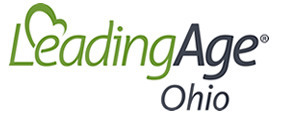Complete Story
12/02/2022
House passes nursing facility relief; bill moves to Senate
House passes nursing facility relief;
bill moves to Senate
Yesterday afternoon, the Ohio House passed a bill that included $615 million in state and federal funds to nursing homes in the state. As reported in yesterday’s edition of The Source, the language was amended into Senate Bill 110 in House Finance Committee then was voted out of the House at the afternoon session. When a bill passes each chamber but in different versions (such as in this case), a conference committee will be appointed with members of each the House and Senate to work through the differences. As such, yesterday’s vote only represents a step in the process, and negotiations between the House and Senate will continue. The House amendment includes the following:
- Appropriation of $615 million, representing $204 million in state general revenue funding and $411 million in federal matching funds. This figure is calculated based on the full cost of rebasing the nursing facility formula using 2021 cost report data. Sixty percent of funds are to be distributed based on the Quality Incentive Payment portion of the Medicaid formula, with 40 percent of funds to be distributed based on the base rate.
- Language from HB466 that would require health care staffing agencies to register with the state of Ohio and uphold certain operational and quality standards. Not included in the bill was language from HB466 that would place pricing caps on healthcare staffing agencies.
- Language that would require the Ohio Department of Medicaid to prepare a report detailing the private room inventory in all nursing facilities in the state, due to the General Assembly no later than April 1, 2023.
Senate leadership has previously signaled a reluctance to draw from general revenue funds (GRF) to increase reimbursement rates, instead favoring a one-time, lump sum investment via the state’s remaining American Recovery Plan (ARPA) funds. Rate increases for July 1, 2023 ratesetting would then be part of the next year’s SFY 2024-2025 budget negotiations. The Senate also favors a more-modest investment ($305 million), based on the cost of rebasing just the direct care portion of the funding. Both plans would distribute 60% of funding via a quality mechanism and 40% equitably among providers, though the calculations for each portion differ.
LeadingAge Ohio continues to be in daily conversations behind the scenes with House and Senate staff and leadership as well as the other nursing facility associations to ensure relief funding is appropriated by the year’s end. When and if a “call to action” is necessary, we will reach out to members directly.
This morning, the Cleveland Plain Dealer published an article outlining and critiquing the House proposal.
Any questions may be directed to Susan Wallace at swallace@leadingageohio.org.
